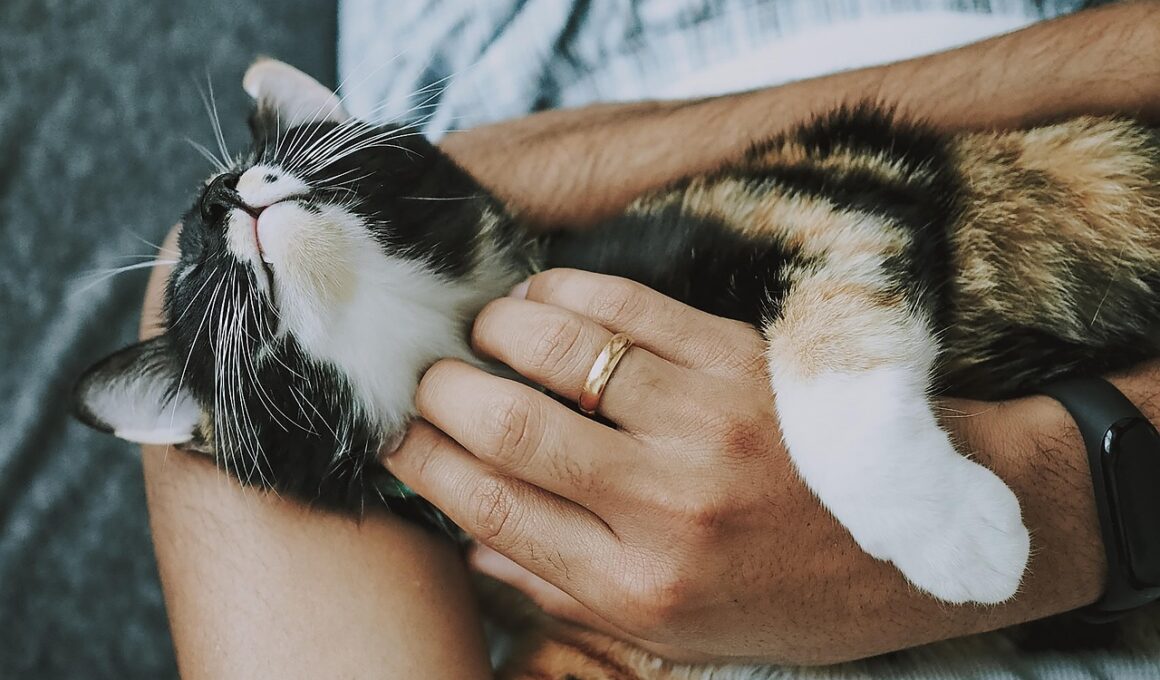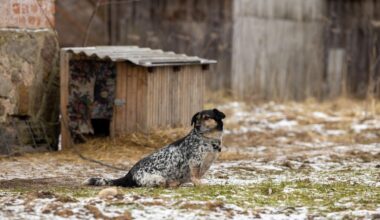Understanding Rescue Cat Breeds and Their Traits
Rescue cats come from various backgrounds and breeds, each exhibiting unique characteristics and behaviors. Understanding these traits is crucial for rehabilitation efforts. For example, the Domestic Shorthair is known for its adaptability and friendliness, making them excellent companions. They bond well with humans, and adapting to new environments tends to be easier for them. On the other hand, Persians may require specific grooming due to their long fur, which can easily become matted. Socialization is vital for this breed to feel secure. Tabbies stand out for their affectionate nature. Their playful demeanor makes them appealing and ensures that they quickly integrate into family life. Knowing individual backgrounds aids rehabilitation and supports tailored care plans to address any behavioral issues. For those interested in adopting or fostering, considering breeds can help ensure compatibility with potential home environments. Identifying characteristics such as energy levels, grooming needs, and sociability assists rescue organizations in matching cats to the right fosters or adopters. This understanding leads to happier, well-adjusted cats and families, facilitating long-term placements.
Another important aspect in the rehabilitation of rescue cats is recognizing their potential behavioral issues stemming from past experiences. Feral cats often display challenging behaviors, such as aggression or fearfulness. In contrast, Ragdolls tend to be gentle and playful, but might be timid initially due to their cautious nature. Understanding the history of each cat significantly impacts the approach during rehabilitation. Siamese cats may crave socialization, so providing interaction is essential for their adjustment. Ensuring a safe space helps minimize stress and allows the cat to acclimate. A structured routine aids in establishing trust. The incorporation of enrichment activities like interactive toys fosters mental and physical engagement, assisting in behavior modification. A gradual introduction to the new environment positively shapes how they respond to challenges. Patience plays a crucial role in rehabilitation; not every cat adjusts at the same speed. Keeping the environment as calm and predictable as possible leads to better outcomes. Be attentive to any signs of stress or discomfort, addressing them with care and understanding. Rehabilitation requires a consistent and ongoing effort to foster secure connections.
The Importance of Breed Characteristics
Specific breed characteristics significantly influence how each cat behaves and interacts with humans. For instance, British Shorthairs are distinguished by their calm demeanor, making them less likely to react negatively to changes in their environment. This steadiness can ease the rehabilitation process if these cats come from stressful situations. Oriental Shorthairs, however, are more active and require consistent stimulation. Their playful tendencies mean they thrive in homes that can provide engagement. Main Coons, known for their intelligence, often need a stimulating environment to keep them happy. Engaging with puzzles and toys fosters this breed’s natural curiosity, which can redirect negative behaviors stemming from anxiety or boredom. Understanding these distinctions is vital during the matching process with potential adopters. As we build awareness around the varying needs of different breeds, we can improve the overall experience for rescue cats and their future families. For rescue organizations, sharing insights on these traits aids in promoting breed-informed adoptions, enhancing the chances of happier transitions and successful long-term placements.
Establishing trust plays an essential role in the rehabilitation of rescue cats, especially those with past traumas. Calico cats, known for their vibrant fur patterns, often come with varied temperaments. Their individual personalities may range from affectionate to independent. Understanding their unique needs helps create a nurturing space. Creating positive experiences through gentle interactions helps cats realize that humans can be trusted. Norwegian Forest Cats are friendly, but they may take time to warm up. Gradual exposure and respecting their space help to alleviate fear. Providing a cozy, quiet area allows them to retreat and feel secure. Monitoring their interactions with humans enables us to identify stressful situations. Administering treats can form positive associations with human presence and interaction. The goal is to create a safe and reassuring space where the cat feels in control. Pairing patience with a careful understanding of the breed’s traits will foster a supportive environment that encourages trust. The more trust we establish, the more willing these cats will be to open up and show their true personalities.
Addressing Special Needs
Some rescue cats have special needs that require focused rehabilitation practices. Cats suffering from medical issues, such as diabetes or mobility impairments, need specialized care and attention. Sphynx cats, while generally outgoing, have unique skin care requirements that must be understood. Ensuring they receive appropriate treatment and handling promotes their well-being. Additionally, Himalayans may face challenges with grooming due to their long fur, which necessitates regular maintenance. Educating potential adopters on these needs can help ensure a smoother transition into the home. Furthermore, recognizing behavioral challenges stemming from abuse or neglect allows for targeted training efforts. Implementing gradual desensitization techniques can significantly benefit cats who fear handling or new environments. Utilizing calming aids can also ease anxiety during rehabilitation. Positive reinforcement training is particularly effective, rewarding desired behaviors and encouraging confidence. Each specialized approach will enhance the bond between cat and human. Educating the community about these special needs fosters a deeper understanding of rescue cats, encouraging more individuals to embrace the joys of adopting these loving companions. Support systems for offers are essential in these cases.
Training and patience are crucial for helping rescue cats adjust within their new homes, especially for particular breeds with distinct traits. Snowshoe cats are social and enjoy company, requiring homes that foster social interaction. Their need for engagement guides proper introductions and activities that include all family members. To ensure they adapt well, it is vital to focus on mutual understanding and communication. Conversely, American Shorthairs are usually easygoing. However, they may take time to acclimate. Watching for signs of stress when introducing them to new surroundings is essential. Creating safe spaces can help alleviate anxiety, allowing the cat to feel secure. Implementing a gradual introduction helps them adjust smoothly and feel comfortable in their new world. Environmental enrichment, such as vertical spaces, can empower the cat’s natural instincts, thus enhancing their mental and physical health. Understanding each rescue cat’s nuances equips adopters to respond more effectively to their individual needs. The journey of rehabilitation becomes fulfilling as the bond develops and strengthens, providing a supportive environment where cats flourish. Training alongside compassion promotes lasting relationships that benefit both the cat and the owner.
Final Thoughts
Understanding the various rescue cat breeds and their characteristics is essential for both successful rehabilitation and long-term placements. Every breed brings unique traits that impact their behavior, whether it involves energy levels, playfulness, or grooming needs. This blend of traits enriches the incredible tapestry of rescue cats seeking homes and fosters. Learning about these unique aspects enables families and individuals to make informed decisions when adopting. Through tailored strategies, we can better address the individual needs of each cat and create lasting bonds. Provision of support, understanding breed-specific qualities, and addressing special needs plays an essential role throughout rehabilitation. Rescue cats deserve the opportunity to thrive in loving environments, where they are understood and appreciated for who they are. With continued awareness and advocacy, we promote not only appreciation for diverse feline personalities but also awareness about the immense joy they bring. Encouraging adoptions nurtures the lives of countless cats while providing companionship to families. The mission of educating potential adopters may lead to a better understanding of cats overall and the joys of rescuing and giving a loving home.
When understanding rescue cats, awareness of breeds and their personalities enables healthful and harmonious relationships. Through compassionate efforts, we can help every rescue cat find their forever home.


